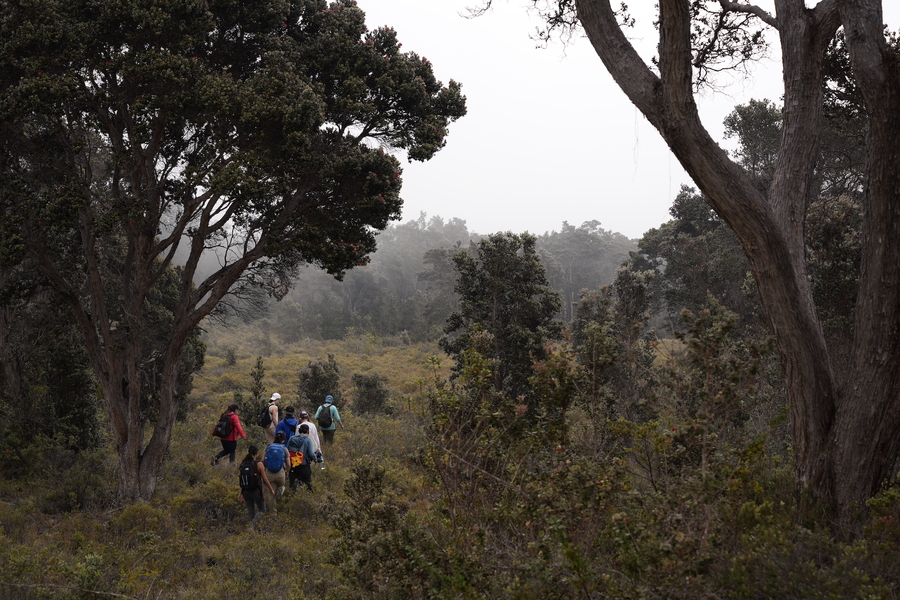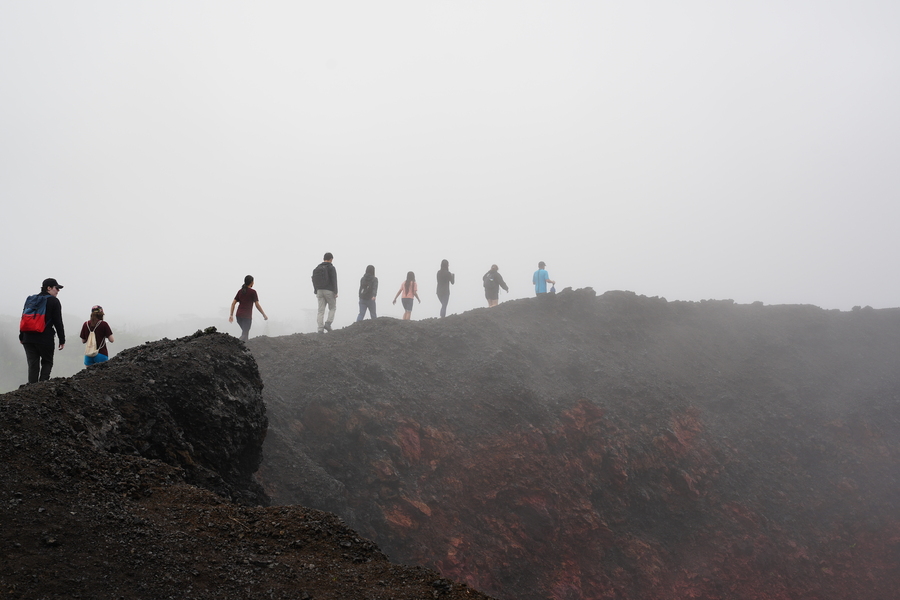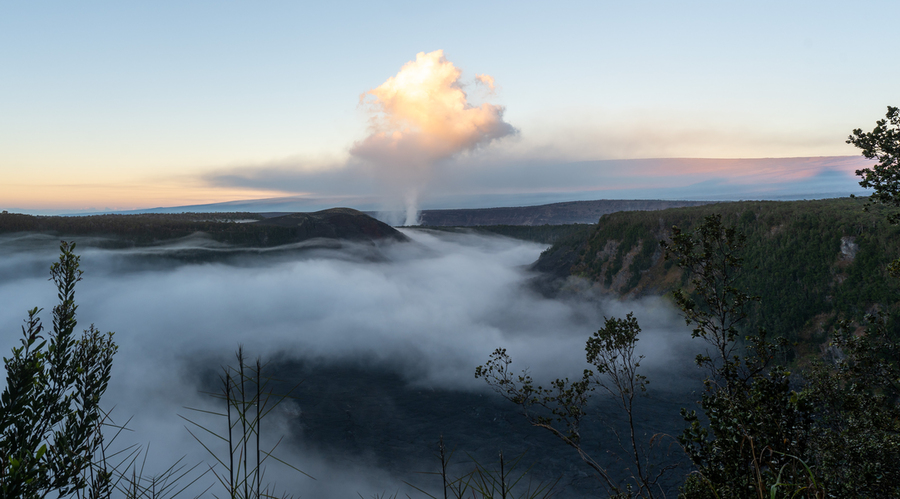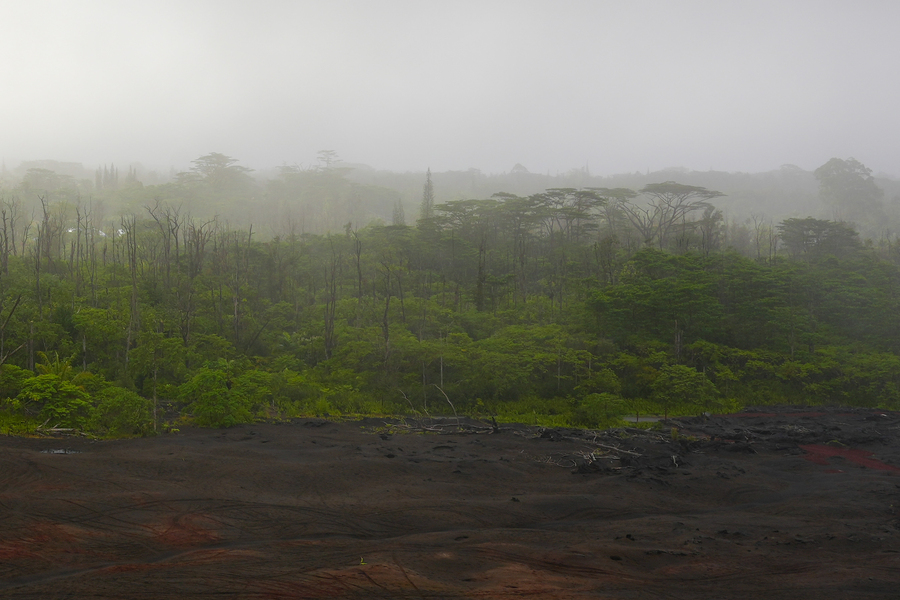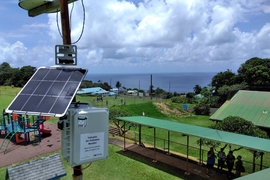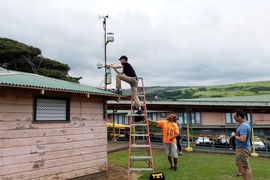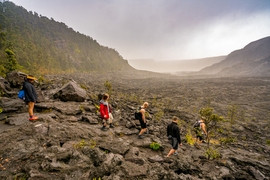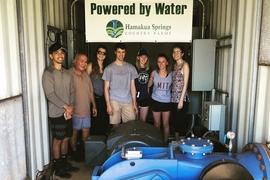When Joy Domingo-Kameenui spent two weeks in her native Hawaii as part of MIT class 1.091 (Traveling Research Environmental eXperiences), she was surprised to learn about the number of invasive and endangered species. “I knew about Hawaiian ecology from middle and high school but wasn’t fully aware to the extent of how invasive species and diseases have resulted in many of Hawaii’s endemic species becoming threatened,” says Domingo-Kameenui.
Domingo-Kameenui was part of a group of MIT students who conducted field research on the Big Island of Hawaii in the Traveling Research Environmental eXperiences (TREX) class offered by the Department of Civil and Environmental Engineering. The class provides undergraduates an opportunity to gain hands-on environmental fieldwork experience using Hawaii’s geology, chemistry, and biology to address two main topics of climate change concern: sulfur dioxide (SO2) emissions and forest health.
“Hawaii is this great system for studying the effects of climate change,” says David Des Marais, the Cecil and Ida Green Career Development Professor of Civil and Environmental Engineering and lead instructor of TREX. “Historically, Hawaii has had occasional mild droughts that are related to El Niño, but the droughts are getting stronger and more frequent. And we know these types of extreme weather events are going to happen worldwide.”
Climate change impacts on forests
The frequency and intensity of extreme events are also becoming more of a problem for forests and plant life. Forests have a certain distribution of vegetation and as you get higher in elevation, the trees gradually turn into shrubs, and then rock. Trees don’t grow above the timberline, where the temperature and precipitation changes dramatically at the high elevations. “But unlike the Sierra Nevada or the Rockies, where the trees gradually change as you go up the mountains, in Hawaii, they gradually change, and then they just stop,” says Des Marais.
“Why this is an interesting model for climate change,” explains Des Marais, “is that line where trees stop [growing] is going to move, and it’s going to become more unstable as the trade winds are affected by global patterns of air circulation, which are changing because of climate change.”
The research question that Des Marais asks students to explore — How is the Hawaiian forest going to be affected by climate change? — uses Hawaii as a model for broader patterns in climate change for forests.
To dive deeper into this question, students trekked up the mountain taking ground-level measurements of canopy cover with a camera app on their cellphones, estimating how much tree coverage blankets the sky when looking up, and observing how the canopy cover thins until they see no tree coverage at all as they go further up the mountain. Drones also flew above the forest to measure chlorophyll and how much plant matter remains. And then satellite data products from NASA and the European Space Agency were used to measure the distribution of chlorophyll, climate, and precipitation data from space.
They also worked directly with community stakeholders at three locations around the island to access the forests and use technology to assess the ecology and biodiversity challenges. One of those stakeholders was the Kamehameha Schools Natural and Cultural Ecosystems Division, whose mission is to preserve the land and manage it in a sustainable way. Students worked with their plant biologists to help address and think about what management decisions will support the future health of their forests.
“Across the island, rising temperatures and abnormal precipitation patterns are the main drivers of drought, which really has significant impacts on biodiversity, and overall human health,” says Ava Gillikin, a senior in civil and environmental engineering.
Gillikin adds that “a good proportion of the island’s water system relies on rainwater catchment, exposing vulnerabilities to fluctuations in rain patterns that impact many people’s lives.”
Deadly threats to native plants
The other threats to Hawaii’s forests are invasive species causing ecological harm, from the prevalence of non-indigenous mosquitoes leading to increases in avian malaria and native bird death that threaten the native ecosystem, to a plant called strawberry guava.
Strawberry guava is taking over Hawaii’s native ōhiʻa trees, which Domingo-Kameenui says is also contributing to Hawaii’s water production. “The plants absorb water quickly so there’s less water runoff for groundwater systems.”
A fungal pathogen is also infecting native ōhiʻa trees. The disease, called rapid ʻohiʻa death (ROD), kills the tree within a few days to weeks. The pathogen was identified by researchers on the island in 2014 from the fungal genus, Ceratocystis. The fungal pathogen was likely carried into the forests by humans on their shoes, or contaminated tools, gear, and vehicles traveling from one location to another. The fungal disease is also transmitted by beetles that bore into trees and create a fine powder-like dust. This dust from an infected tree is then mixed with the fungal spores and can easily spread to other trees by wind, or contaminated soil.
For Gillikin, seeing the effects of ROD in the field highlighted the impact improper care and preparation can have on native forests. “The ‘ohi’a tree is one of the most prominent native trees, and ROD can kill the trees very rapidly by putting a strain on its vascular system and preventing water from reaching all parts of the tree,” says Gillikin.
Before entering the forests, students sprayed their shoes and gear with ethanol frequently to prevent the spread.
Uncovering chemical and particle formation
A second research project in TREX studied volcanic smog (vog) that plagues the air, making visibility problematic at times and causing a lot of health problems for people in Hawaii. The active Kilauea volcano releases SO2 into the atmosphere. When the SO2 mixes with other gasses emitted from the volcano and interacts with sunlight and the atmosphere, particulate matter forms.
Students in the Kroll Group, led by Jesse Kroll, professor of civil and environmental engineering and chemical engineering, have been studying SO2 and particulate matter over the years, but not the chemistry directly in how those chemical transformations occur.
“There's a hypothesis that there is a functional connection between the SO2 and particular matter, but that's never been directly demonstrated,” says Des Marais.
Testing that hypothesis, the students were able to measure two different sizes of particulate matter formed from the SO2 and develop a model to show how much vog is generated downstream of the volcano.
They spent five days at two sites from sunrise to late morning measuring particulate matter formation as the sun comes up and starts creating new particles. Using a combination of data sources for meteorology, such as UV index, wind speed, and humidity, the students built a model that demonstrates all the pieces of an equation that can calculate when new particles are formed.
“You can build what you think that equation is based on first-principle understanding of the chemical composition, but what they did was measured it in real time with measurements of the chemical reagents,” says Des Marias.
The students measured what was going to catalyze the chemical reaction of particulate matter — for instance, things like sunlight and ozone — and then calculated numbers to the outputs.
“What they found, and what seems to be happening, is that the chemical reagents are accumulating overnight,” says Des Marais. “Then as soon as the sun rises in the morning all the transformation happens in the atmosphere. A lot of the reagents are used up and the wind blows everything away, leaving the other side of the island with polluted air,” adds Des Marais.
“I found the vog particle formation fieldwork a surprising research learning,” adds Domingo-Kameenui who did some atmospheric chemistry research in the Kroll Group. “I just thought particle formation happened in the air, but we found wind direction and wind speed at a certain time of the day was extremely important to particle formation. It’s not just chemistry you need to look at, but meteorology and sunlight,” she adds.
Both Domingo-Kameenui and Gillikin found the fieldwork class an important and memorable experience with new insight that they will carry with them beyond MIT.
How Gillikin approaches fieldwork or any type of community engagement in another culture is what she will remember most. “When entering another country or culture, you are getting the privilege to be on their land, to learn about their history and experiences, and to connect with so many brilliant people,” says Gillikin. “Everyone we met in Hawaii had so much passion for their work, and approaching those environments with respect and openness to learn is what I experienced firsthand and will take with me throughout my career.”
